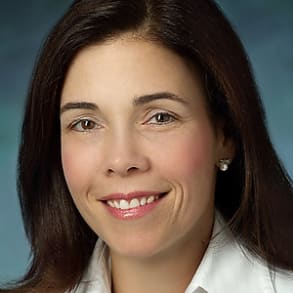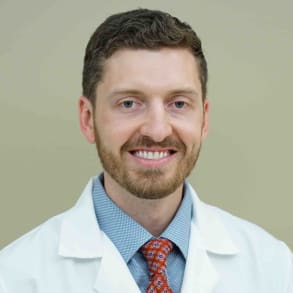Gastroenterologist Olaya Brewer Gutierrez and minimally invasive surgeon Brett Parker, each from Johns Hopkins, discuss concomitant transoral incisionless fundoplication (cTIF), a procedure to treat gastroesophageal reflux that includes same session repair of a hiatal hernia via laparoscopy followed by endoscopical restoration of the gastroesophageal flap valve. They answer commonly asked questions such as: How does cTIF differ from TIF? Who are the best candidates for the procedure? What is recovery like?
I want to first clarify that transoral incision is on the application is an endoscopic procedure where we restore recreate, reinforce the gastroesophageal flat valve to treat prevent or actually cure um gastroesophageal reflux. Usually the valve is around 270 degrees to 300 degrees of circumference and three centimeter in length. This procedure is usually indicated for patients with hiatal hernias less than two centimeters. Now, since 2017, the FDA approved the use of this technique in patients with Hiatal hernias greater than two centimeter if we combine the Hiatal hernia repair. So this is a great collaboration between minimally invasive surgeons and gastroenterologists where the surgeon repairs the hernia and the gastroenterologist perform the tiff in the same session for patients with hernias greater than two centimeters. So the most simple answer is that the standard tiff or trans oral incisionless fund application is a purely endoscopic procedure that's done through the mouth. Whereas ac tiff or a combined tiff is that endoscopic procedure combined with the surgery to fix the hiatal hernia. So to better understand the difference, you have to understand the two components of your anti reflux barrier. The first one being the diaphragm being snug around the esophagus or if that's loose, you have a hiatal hernia or the lower esophageal sphincter, which is the high pressure zone in the bottom of the esophagus that naturally keeps stomach acid down. And when that's loose, you can have gastroesophageal reflux disease. So, in this standard Tiff, what happens is the endoscopist goes through the mouth to wrap the stomach around the esophagus partially and that recreates the lower esophageal sphincter, but it doesn't address the diaphragm. There's no way to repair a hiatal hernia through the inside of the stomach. So, what we saw is that although that's an attractive procedure for patients because it's an alternative to surgery and they avoid incisions. We noticed that more frequently they were going back on their antacid medications when compared to traditional anti reflux surgery. And we learned that that was most commonly due to a missed tidal hernia. So now more commonly, what we're doing is we're bringing patients into the operating room and we're first repairing the hiatal hernia with surgery through minimally invasive surgical techniques. And then at the same time doing the trans oral incisionless fund application while they're asleep during the same procedure. And that's known as the combined Tiff. And that addresses both components of the anti reflux barrier. And we're having great results. Patients who really don't want to be on proton pump inhibitors long term, who have, who are PP or proton pump inhibitors averse who have intolerance to these medications and patients who just want another option to treat their gastroesophageal reflux disease. After the patient is discharged home, the patient will come back approximately three weeks after the procedure to see the minimally invasive surgeon. After about a month, they will come and see the gastroenterologist. The patients will be discharged on maximum dose of proton pump inhibitors with or without h two blockers. The patient will continue on the same dose of medication for three months. And at three months after the procedure, the patients will be tapered off. Then the patient will come either with the surgeon or the gastroenterologist at six months to have an upper endoscopy with a bravo ph monitoring device placement to kind of see how the reflux is being controlled. And one year after the procedure, the patient will have an upper G I series to see if there is recurrence of the hiatal hernia. There's nothing more valuable than history and physical. So the first thing we always do is meet the patient go through their complaints, make sure that we're all speaking the same language and understand each other. If it makes sense to move forward, we usually do a standard four gut work up at our center and that consists of an upper endoscopy so that we can look for esophagitis or inflammation of the esophagus. Hiatal hernias strictures. We also take biopsies of the lower esophagus to look for pre cancerous changes known as Barrett's esophagus. We'll also take biopsies of the stomach to look for a bacteria called H pylori that can cause ulcers and pain. At the same time, we typically do PH testing known as a bravo ph test or possibly a catheter based 24 hour study off of medication. And that's the gold standard to diagnose gastroesophageal reflux disease. After that, we usually do some form of motility testing. So, either high resolution esophageal manometry or an endo flip. And this looks for swallowing disorders and rules out motility disorders. And then following that, we'll do an upper G I barium swallow. This is an X ray where the patient drinks contrast and we look at the anatomy, the flow of contrast and it sort of serves as a surgical road map. During the procedure. In select patients, we will do a gastric emptying study to evaluate for slow gastric emptying or gastroparesis. And then we sort of take all of this information and we put it together to make one clear clinical picture. We don't rely too heavily on one's individual test, but we put it all together to make a very clear clinical picture before making a decision about an anti reflux intervention. And at our center, we offer every anti reflux intervention. Sometimes patients just need medications and lifestyle changes. Sometimes patients need bariatric surgery. We also offer every other anti reflux technique at our center. So we tailor it to the patient the surgery itself lasts a couple of hours and then four hours after surgery, we usually have the patients start drinking liquids. Most patients will stay one night in the hospital just to make sure that their pain is controlled and they can ambulate and they can stay hydrated. They go home the following day and their diet is typically tailored first on liquids and then it's a graduated experience slowly over the next several weeks, up to soft foods and regular foods. And typically by the 3 to 4 week mark, most patients are eating regular food. They have soreness for 3 to 5 days just from the incisions. And we limit their heavy lifting to £15 for eight weeks just to let the diaphragm heal and the abdominal wall incisions heal. Uh But typically after that period, most patients are living a very normal quality of life.




